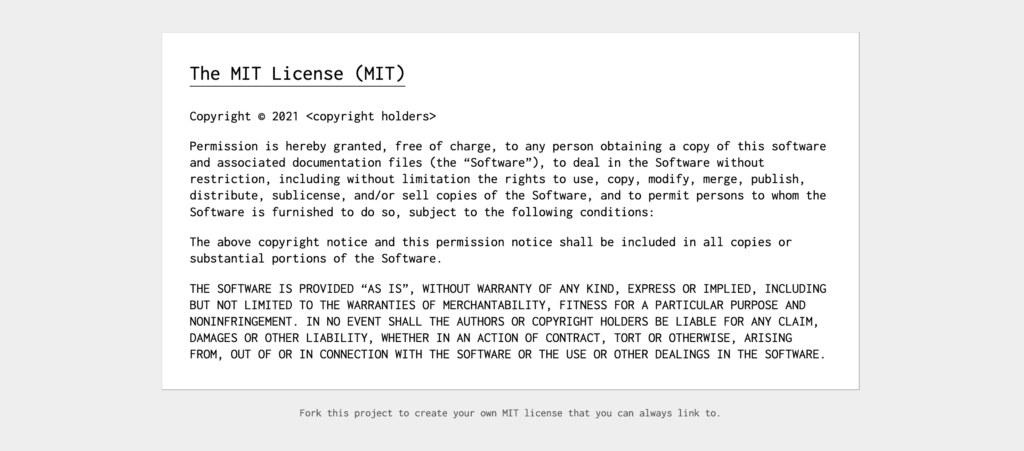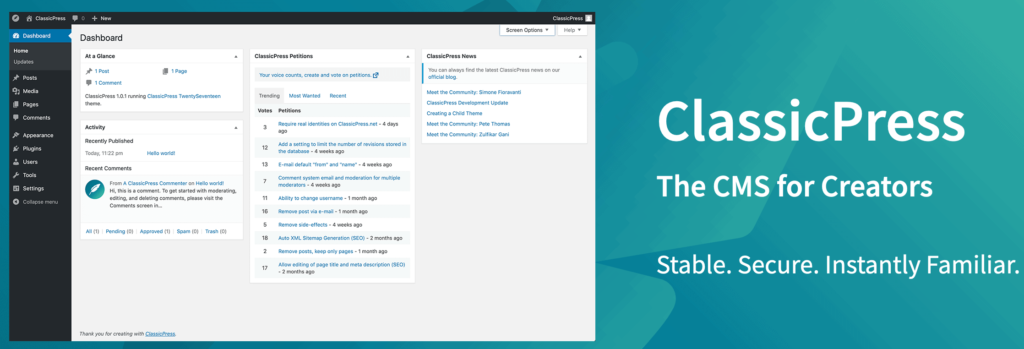One of the big selling points of WordPress is its cost. The unofficial tag line for the platform could be, “It’s free and good!”. It’s a slight exaggeration, but the zero cost is one of the plus points. Though, it’s worth considering why this is by asking, “What is the GPL?”
This is because the General Public License (GPL) tells you how to use and distribute the core WordPress code. By extension, this also means the themes, plugins, and other products connected to the platform also use the GPL. As you’ll find out, “free” can have multiple meanings in this context.
In this post, I’ll tackle the answers you need on the GPL, and talk a bit about what this means for you as a software developer working within WordPress.
What is the GPL?
In a nutshell, the General Public License (GPL) is one of many software licenses you can use to distribute your products.
It’s a series of licenses from the mind of Richard Stallman. I’ll stay out of the recent furor, only to say that his work as part of the GNU Project and Free Software Foundation (FSF) on these licenses means we all get to enjoy the benefits.

There are a few core concepts of the GPL that you need to take on board:
- You can run a GPL-licensed program for any purpose, in any way you’d like.
- You’re able to reverse-engineer the software, take it apart, study it, and change it as much as you need.
- You can redistribute copies without restriction.
- You’re also able to redistribute your altered copies of the program to others.
These are the ‘four freedoms’, and they’re at the basis of the FSF and WordPress.
I’ll talk about how the GPL links into open source software (and WordPress in particular) later. For now, know that it’s at the basis of lots of free, open source solutions – the Linux kernel, Drupal, the VLC media player, and (of course) WordPress.
Why Does the GPL Exist?
The GPL has existed since 1989, for programs distributed by and used with the GNU Project. There’s a direct link between the GNU project and the open source movement in general. There are a number of programs and software under its belt including the GNOME Operating System (OS).

In short, the GPL exists in order to validate and give a fundamental philosophical basis to the GNU Project. On the surface, this has little to do with our involvement in WordPress, although there are more similarities than you’d think.
How Does the GPL Dovetail with Open Source Software?
As I noted, the GPL gives a legal basis to open source software distributed as part of the GNU Project. The original idea was to see if you could create and distribute a free Operating System (OS) and utility programs. The GPL license is part of that entire project.
In the current day, the GPL has a different goal and job. It’s more of a ‘protector’ of sorts for open source software. It grants you certain rights, and also helps keep your work free (as in speech, not necessarily beer).
The GPL is one of many licenses that help you distribute ‘free’ (or ‘libre’) software. Though, it begs the question: “Why would you do this in the first place?”
Why Would You Want to License With the GPL?
The GPL isn’t the only license that deals with open source software. In fact, the ‘market share’ of the GPL has reduced over the decades. When it was first released, it was dominant.
Now though, there are other licenses such as the MIT license and the Apache 2.0 license. These are ‘permissive’ licenses.

In other words, the crux of a permissive license is “This is free, and given to you as-is”. In fact, this line in itself could be an entire license text.
As I explained, the GPL gives you certain freedoms, but also expects that you also meet certain requirements. For example, the work you release must also be under a GPL license.
This means your reasoning for using a GPL license is philosophical in the first instance. By using the license, you’re giving back to the open source community, and ensuring others will too. A good analogy is of a spider plant. If you remove some of the root, a new spider plant will grow wherever you plant it. The GPL ensures open source is self-sufficient.
This brings up a good segue into how the GPL and WordPress tie together.
What Does the GPL Mean for Licensing WordPress Products?
In the last section, I talked about permissive licenses, and how the GPL isn’t in that camp. Instead, the GPL is a ‘copyleft’ license.
Of course, it derives its name from “copyright”. You could see it as an ‘anti-copyright’ licensing philosophy, because of its protective yet reciprocal basis.
In the real-world, copyleft covers the concept of redistributing your work with the same license. As such, this is how you can redistribute WordPress without repercussions, and how we get forks such as ClassicPress.

In contrast, copyleft and the GPL is how we also get the scourge of nulled plugins and themes (and the sites that distribute them). The sad news is that these sites aren’t doing anything wrong per se.
The terms of the GPL means distributing any theme or plugin is fair game, as is charging for it. The license doesn’t concern itself with business models, only on distribution. It’s also worth noting that the GPL isn’t concerned with the copyrights you’ve made either. Those are still binding in a legal sense.
Though, because it’s legal and ethical to distribute any WordPress-related product, it puts you as a developer in an odd situation.
On the surface, this doesn’t seem like a good deal for WordPress developers. I’ll have more to say on this later.
Where is the Value For Users Who Purchase GPL-licensed Products?
If the GPL ‘deal’ doesn’t seem great for developers, it also seems like a scam for the end user, especially when they have to pay for GPL products. After all, you’re free to head to GitHub, download the source files, and install them on your site without penalty.
Putting a price on products with a GPL license seems opportunistic, at least to people brought up on closed-source proprietary software. Commercial proprietary licenses are notorious for being the most restrictive of all. For example, boxed software in the past had a specific license that caused you to consent to an automatic opt-in once you opened it. You also see this with digital app store downloads.
For users, it’s clear that they’re not paying for the product in the first instance. Instead, they’re getting the following for their money:
- A period of bug fixes and updates.
- Fixed-term support, again for a certain period.
WordPress blogger and product guru Chris Lema also notes that you’re paying for a developer’s expertise. This makes sense, and is a solid third aspect of the value an end user gets from their purchase.
How Should You Approach Licensing WordPress Products Given the GPL?
Given everything I’ve said so far, you could wonder how you should approach WordPress product licensing in general. Here’s a short list of tips:
- Embrace the GPL, because it’s the only license you can use.
- Find other ways to offer users value from their purchase.
In a nutshell, that’s all you need. You can’t use a different license for your WordPress products other than the GPL, so there’s no decision to make. This gives you freedom, although you may not recognize it.
With your product tied to the GPL, you can’t worry about redistribution and reverse engineering. Instead, you can focus your attention on all the other aspects of running a WordPress business:
- Making sure your copyrights and trademarks are in place.
- Customer support, the User Experience (UX), and the feedback you get.
- Keeping your product in tip-top shape through bug fixes and updates.
The great news for everyone is that with a GPL license in place, the customer comes first. Their needs will go into your product, your support provision will improve, and you’ll get more loyalty.
As a side benefit, a SaaS model will suit WordPress businesses better. The arguments against a subscription model often miss the subtle shift in the ‘business-user’ balance. This is because you’re putting more value in ongoing support than the product itself.
In Summary
Licensing isn’t a simple case of open source versus proprietary solutions. Each camp has a number of flexible ways to license your product. The GPL is the license WordPress is based on. Due to its terms, this means every theme and plugin created for the platform also uses this license.
Because you can’t choose a different license, you’re free to better serve your customers. This means greater support, more frequent updates, and a business model that could suit you in a more optimal way.
Are you a fan of the GPL, and if not, how should WordPress license itself? Let me know in the comments section below!
